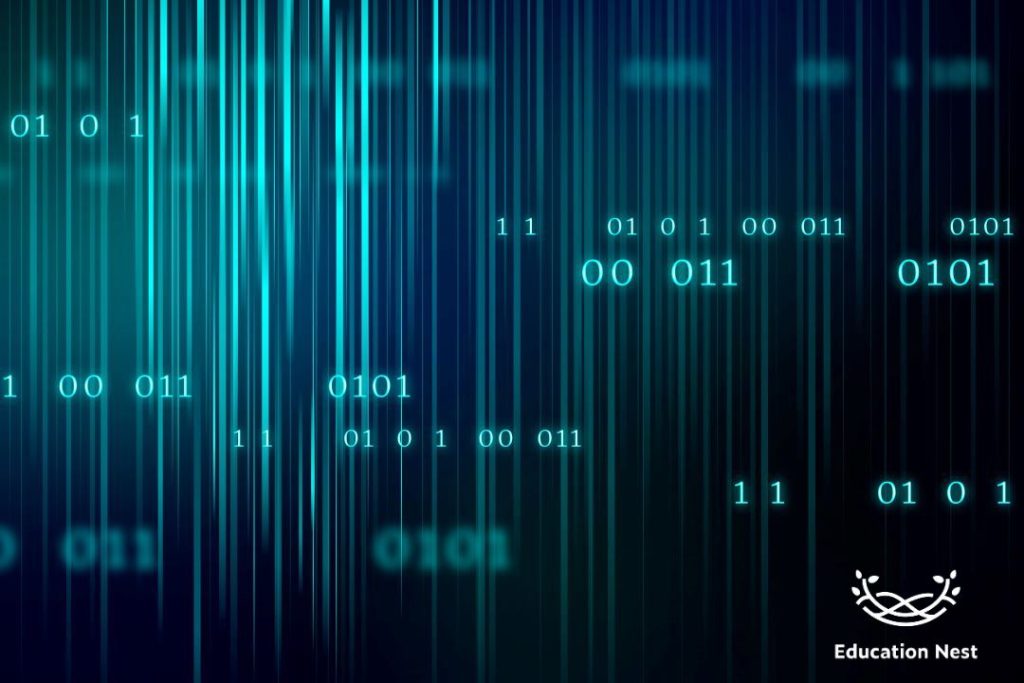
In math, a number system is a way to show how many things there are. There are four different ways to count. They are:
- Base-2 Binary Number System
- Base-8 Octal Number System
- Base-10 Decimal Number System
- Hexadecimal (Base-16) Number System
In this blog post, we will learn about the four different types of number systems, various methods to convert them and how to convert binary to decimal.
The number system is important in most computer tools and especially in the way computers are built. It is used by people who work in computer engineering, communications, networking, and other fields. Before we move on to converting from binary to decimal, let’s make sure we know how each number system works.
What do you understand about the binary number system?

The simplest number system is the Binary Number System, which only has two digits: 0 (zero) and 1. It is also known as the base 2 method. Most computer architecture and electronic gadgets use this number.
01, 101, 1110, 10011, 1011101, and so on are all examples of binary numbers.
What do you understand about the decimal number system?
The numbers from 0 to 9 are shown in a Decimal Number System. Most people use the decimal number system, which is the most popular number system. The base 10 number system is another name for these number systems.
For example, 10, 121, 485, 8483, 82940, and so on, are all decimal numbers.
What do you understand by binary to decimal conversion?
The binary number system is changed to the decimal number system. This means that numbers with a base of 2 are changed to numbers with a base of 10. Because of computer code, it’s important to know how to go from binary to decimal. So the machine can only understand the binary number system, which uses 0 and 1, while people can easily understand the decimal number system, which uses all 10 digits. So, it’s important to know how to convert between binary and decimal number methods.
Methods for the conversion of binary to decimal
Also Read:
The Ultimate Guide to CAPTCHA Code: Meaning and Working
Conversion using Positional notation
Write the binary number and count the power of 2 from right to left, starting with 0 and going up.
Now, from right to left, each binary number has the power of 2 that goes with it. So the most important bit will have a power of 2 that is the largest.
Add what the second step made.
The final answer will be turned into a base-10 decimal number.
Conversion using Doubling
One of the easiest ways to change binary numbers to decimal numbers is to just double them. We need to take the most important part of the number, which is the one on the left. Then, multiply the number by 2 and add the second bit from the left. The result is then stored. In the same way, we need to take the result and multiply it by 2, then take the third leftmost bit and update the result. This process will keep going until we get to the rightmost bit, which is the least important one. Since we’re multiplying by 2, we call this “doubling.”
Formula for binary to decimal
A = xn * bn + xn-1 * bn-1 + ….. + x1 * b1 + x0 * b0
- A represents the integer
- x represents the digit value
- b represents the base value
How to convert binary to decimal
Changing from binary to decimal is a simple process. In a binary number, each character stands for a power of 2. Starting with the rightmost digit, you give each digit the value of 2 times the place of the digit. Then, you add up all of these values to get the decimal equivalent. Here’s how it works in general:
Decimal Value = (binary number) x 2 (position)
1010 is written in binary as 1 * 23 + 0 * 22 + 1 * 21 + 0 * 20 = 8 + 0 + 2 + 0 = 10. So, 1010 in binary is the same as 10 in decimal.
Binary: 110110 Decimal: 32 + 16 + 0 + 4 + 2 + 0 = 54 The number 54 can be written in binary as 110110.
1111 in binary is written as 1 * 23 + 1 * 22 + 1 * 21 + 1 * 20 = 8 + 4 + 2 + 1 = 15 1111 in binary is the same as 15 in decimal.
Remember that the number on the right is 0, the number on the left is 1, and so on. You just put the binary numbers into the formula and figure out what the decimal value is.
Conclusion
So, we’ve seen how easy it is to change binary numbers into decimal numbers, which makes them easier to read and understand. Also, it is important to know that a binary number can also be a decimal number. For example, 10 can be a binary number because it has the digits 0 and 1, but it can also be a decimal number because it is made up of the digits 0 through 9. So, to prevent confusion, always look at the number’s base, such as (10).The base of 2 is 2, so it is a binary number. The base of (10)10 is 10, so it is a decimal number.

